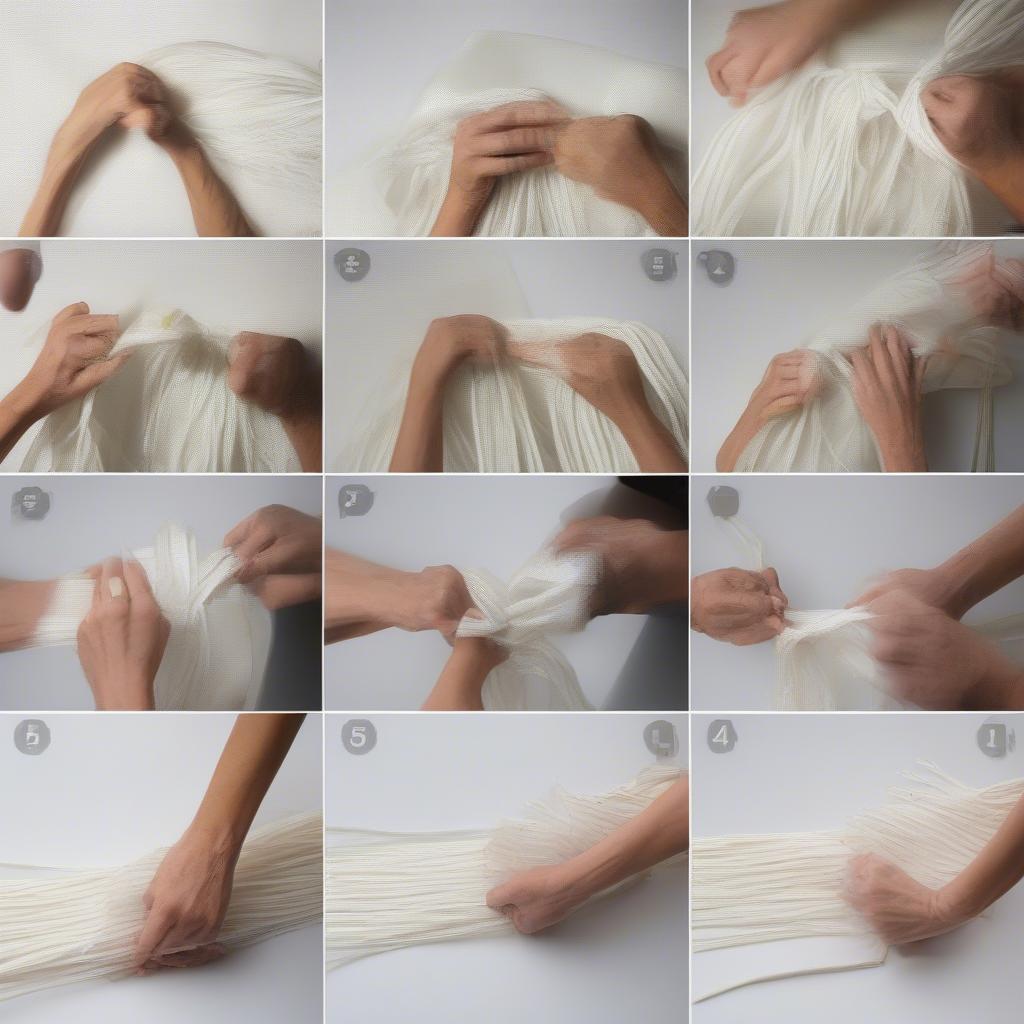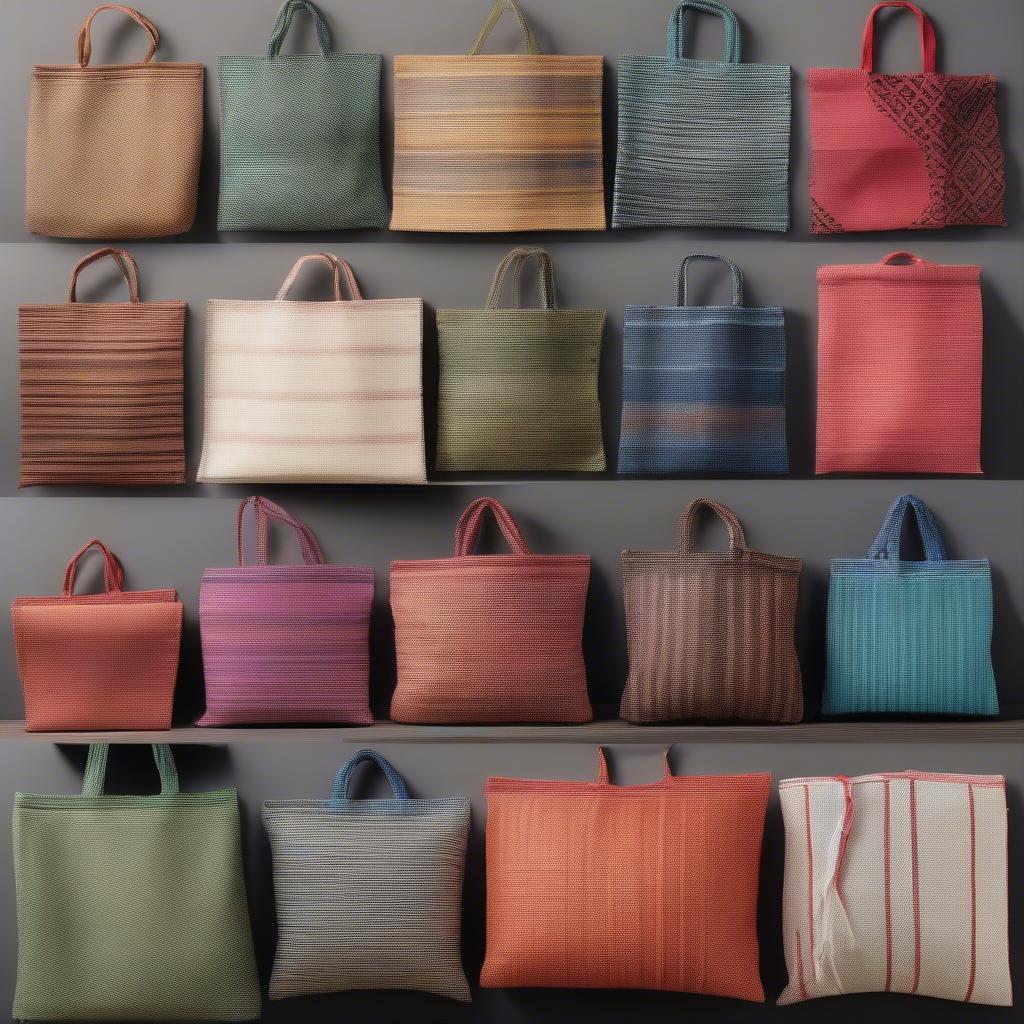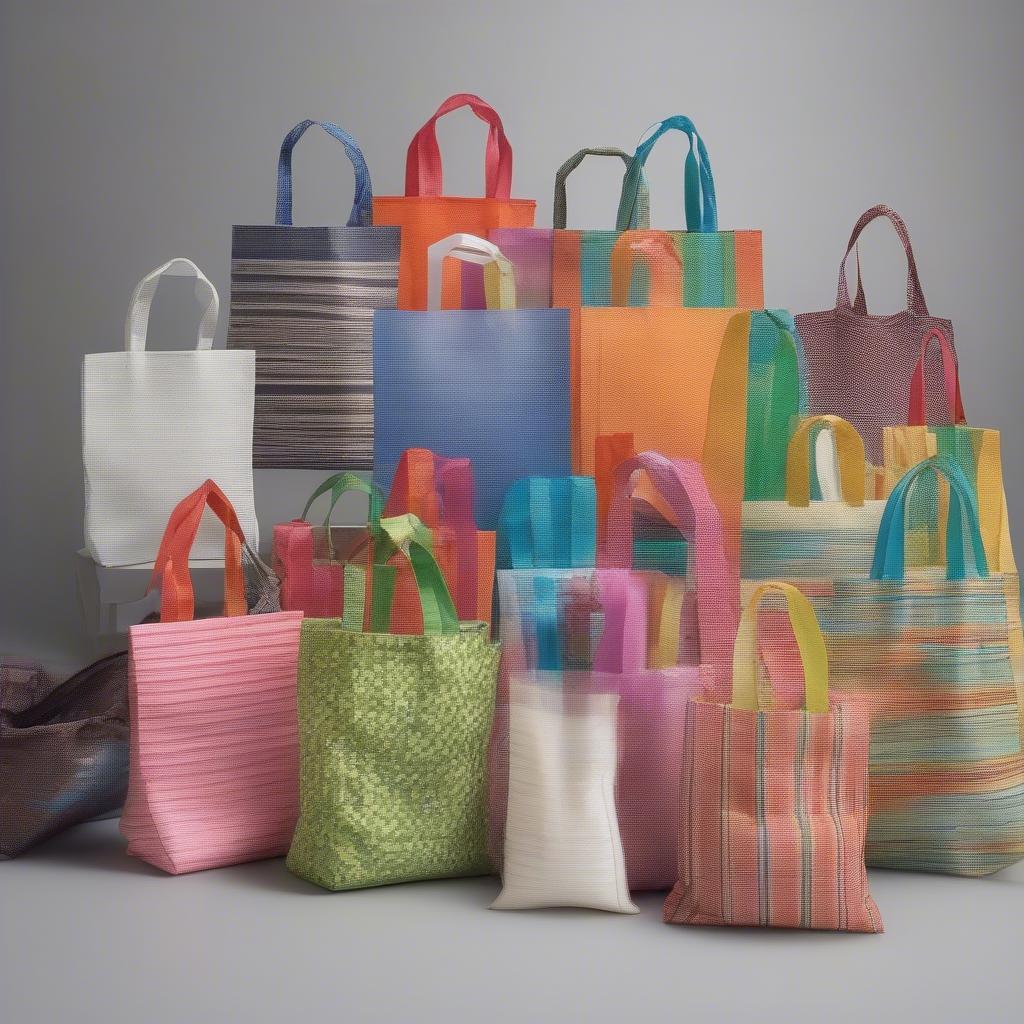Woven Bag
How to Make Woven Polypropylene Bags
Woven polypropylene bags are ubiquitous, from shopping totes to industrial sacks. Learning How To Make Woven Polypropylene Bags opens up a world of possibilities, whether you’re crafting personalized gifts, starting a small business, or simply exploring a new skill. This guide will take you through the process of creating your own woven polypropylene bags.
 A step-by-step guide on how to make a woven polypropylene bag, showing the process from selecting materials to the finished product.
A step-by-step guide on how to make a woven polypropylene bag, showing the process from selecting materials to the finished product.
Gathering Your Materials and Tools
Before you begin, you’ll need to assemble the necessary materials. This includes polypropylene strips, available in a variety of colors and widths. The width of the strip will determine the final texture and strength of your bag. Thicker strips are great for sturdy bags, while thinner ones are ideal for lighter projects. A sturdy loom is crucial. While you can purchase a purpose-built loom, resourceful crafters can create their own from readily available materials like wood or even cardboard. Scissors, a measuring tape, and a lighter (for sealing the ends of the polypropylene strips) are also essential. You may find poly woven bags cape town suppliers helpful for sourcing materials.
Preparing the Loom and Weaving
The first step in how to make woven polypropylene bags involves setting up your loom. This includes warping the loom, which means threading the vertical polypropylene strips (the warp) onto the loom. The spacing of the warp will determine the density of the weave. Once the warp is in place, you’ll begin the actual weaving process by interlacing horizontal strips (the weft) over and under the warp using a specific pattern. There are numerous weaving patterns available, from simple over-under weaves to more complex designs. Experiment to find a pattern you enjoy.
 Different weaving patterns create diverse textures and designs in polypropylene bags.
Different weaving patterns create diverse textures and designs in polypropylene bags.
Shaping and Finishing Your Woven Polypropylene Bag
Once you’ve woven the desired length for your bag, it’s time to shape it. This typically involves folding the woven piece and securing the sides. You can use additional polypropylene strips to sew the sides together or use a heat sealer for a cleaner finish. For the bag handles, you can either weave separate strips and attach them or create handles directly from the bag’s existing weave. A finishing touch can be adding decorative elements like tassels, beads, or even embroidery. If you’re looking to scale up your production, you might consider researching woven polypropylene bags manufacturers in nairobi.
How long does it take to make a woven polypropylene bag?
The time required can vary greatly depending on the size, complexity of the weave, and your experience. A small, simple bag could take a few hours, while a larger, more intricate bag could take several days.
What are the benefits of using polypropylene for bags?
Polypropylene is a durable, water-resistant, and lightweight material, making it ideal for bags. It’s also relatively inexpensive and comes in a wide range of colors. You might also be interested in a woven weekender bag made from this material.
Tips for Success
- Start Small: Begin with a smaller project to get the hang of the weaving process.
- Practice Makes Perfect: Don’t be discouraged if your first attempts aren’t perfect. Weaving is a skill that improves with practice.
- Explore Different Patterns: Try out different weaving patterns to add variety and interest to your bags. You might find the pp leno bag leno woven machine interesting for exploring different weaving styles.
- Be Creative: Don’t be afraid to experiment with different colors, textures, and embellishments to create unique and personalized bags.
Maria Sanchez, a renowned textile artist, emphasizes the versatility of polypropylene: “Polypropylene’s durability and range of colors allow for endless creative possibilities in bag making. From everyday totes to intricate artistic pieces, the only limit is your imagination.”
 Finished woven polypropylene bags in various styles, showcasing different colors, sizes, and handle designs.
Finished woven polypropylene bags in various styles, showcasing different colors, sizes, and handle designs.
Conclusion
Learning how to make woven polypropylene bags is a rewarding experience. It allows you to express your creativity, create functional and stylish bags, and even explore entrepreneurial opportunities. With practice, patience, and a little experimentation, you can master this craft and create beautiful, durable bags for yourself or others. Considering other materials for your bags? Explore non woven shopping bag design for more inspiration.
FAQ
- What type of polypropylene is best for weaving bags?
- Can I wash woven polypropylene bags?
- Where can I find polypropylene strips for weaving?
- What is the difference between woven and non-woven polypropylene bags?
- Are there any special tools needed for weaving with polypropylene?
- How do I fix a broken weave in a polypropylene bag?
- What are some creative ways to decorate woven polypropylene bags?
Scenarios
- Scenario 1: You need a sturdy bag for grocery shopping and want to make your own eco-friendly option.
- Scenario 2: You want to make personalized gifts for friends and family.
- Scenario 3: You’re interested in starting a small business selling handmade bags.
Further Exploration
Check out our other articles on bag making and different weaving techniques for more inspiration and guidance.
Contact Us
Need help with your weaving project? Our customer support team is available 24/7. Reach us in Hanoi, Vietnam or at Tech Avenue, Suite 12, San Francisco, CA 94105, USA.
